| |
Rilpivirine Drug Resistance: E138K, 184I, M184V,
Interactions Between E138K & M184I
|
| |
| |
IHDRW (Drug Resistance Workshop) Los Cabos, Mexico June 7-11 2011
Rima Kulkarni1, Kerim Babaoglu1, Eric Lansdon1, Laurencw Rimsky2, Gaston Picchio3, NMichael Miller1, and Kirsten White1, 1Gilead Sciences, 2Tibotec BVBA, Beerse Belgium, 3Tibotec Titusville, NJ



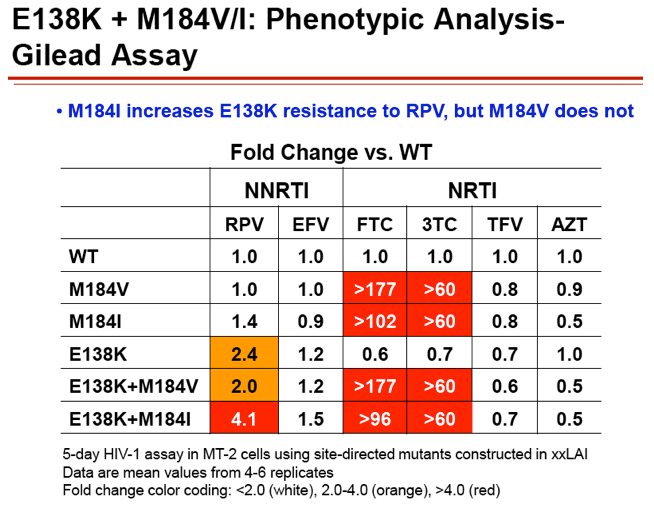
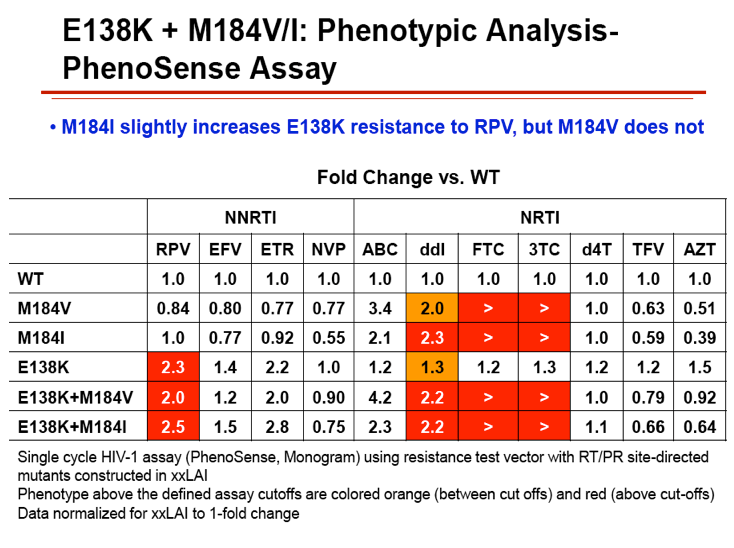
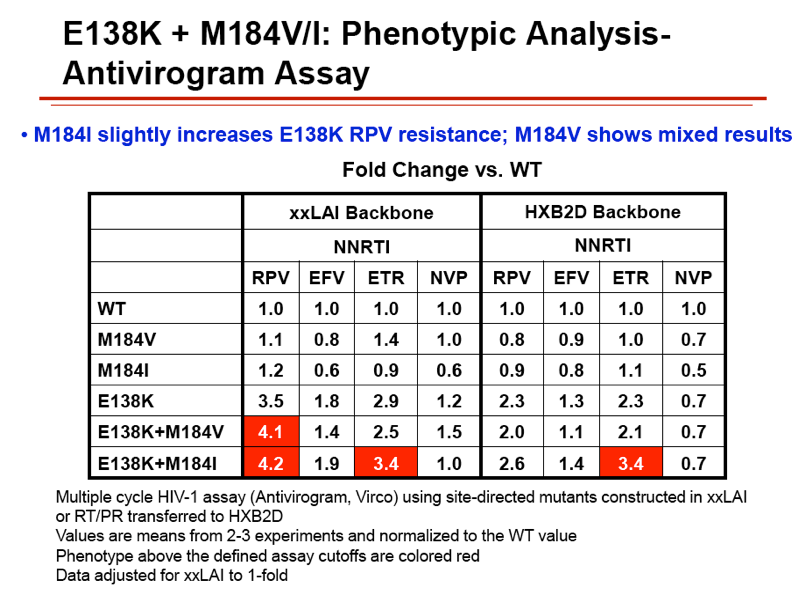
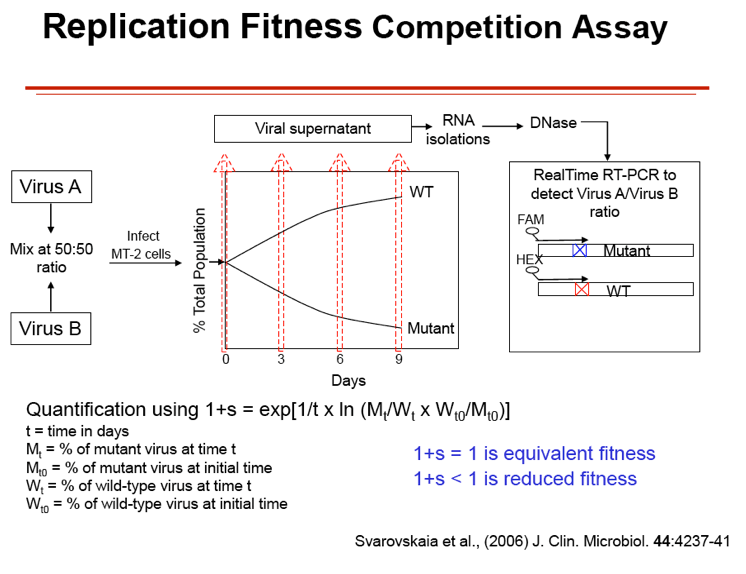
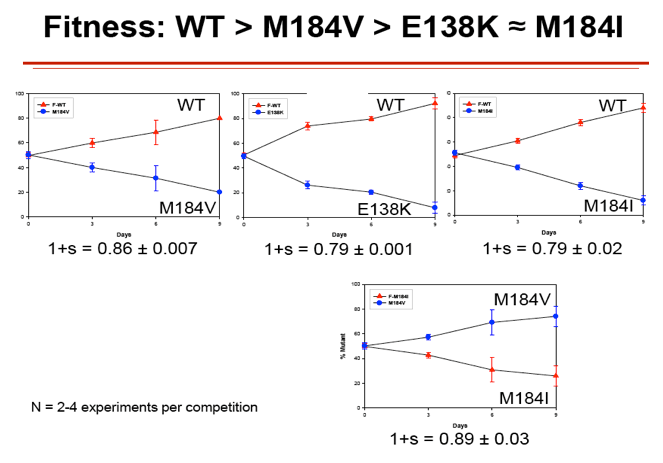
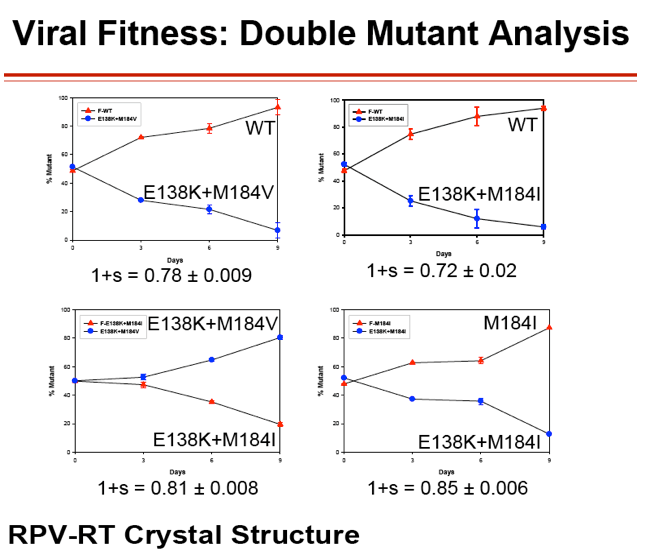
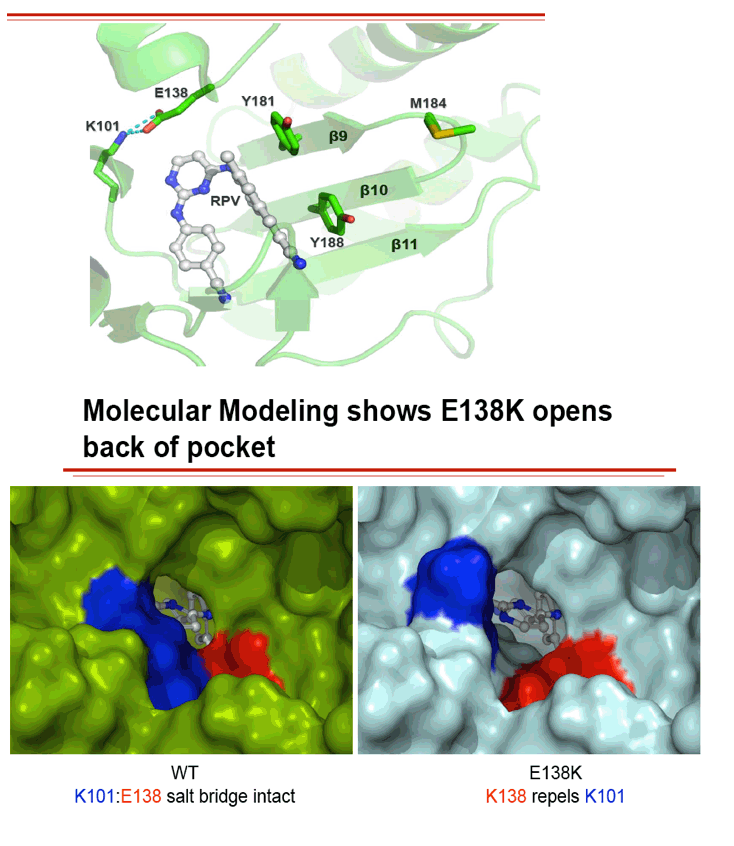
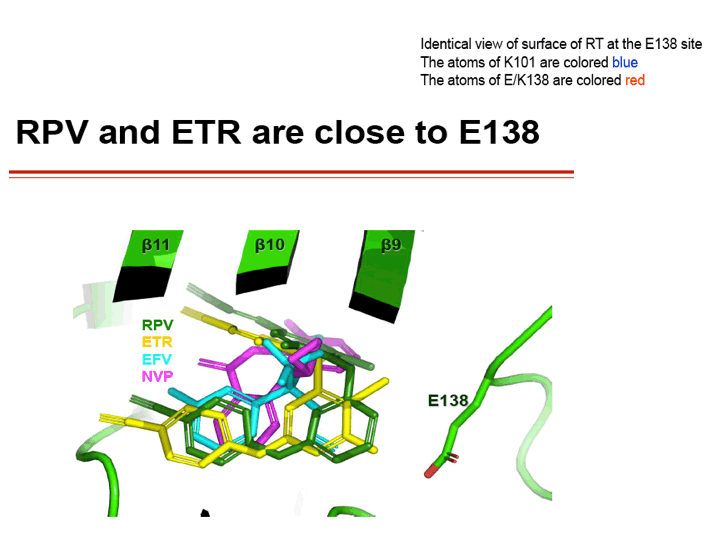
Characterization of the E138K Resistance Mutation in HIV-1 Reverse Transcriptase Conferring Susceptibility to Etravirine in B and Non-B HIV-1 Subtypes
ABSTRACT
We have selected for resistance to etravirine (ETR) and efavirenz (EFV) in tissue culture using three subtype B, three subtype C, and two CRF02_AG clinical isolates, grown in cord blood mononuclear cells. Genotypic analysis was performed at baseline and at various weeks of selection. Phenotypic resistance in regard to ETR, EFV, and nevirapine (NVP) was evaluated at weeks 25 to 30 for all ETR-selected viruses and in viral clones that contained specific resistance mutations that were inserted by site-directed mutagenesis into pNL-4.3 and AG plasmids. The results show that ETR selected mutations at positions V90I, K101Q, E138K, V179D/E/F, Y181C, V189I, G190E, H221H/Y, and M230L and that E138K was the first of these to emerge in most instances. The time to the emergence of resistance was longer in the case of ETR (18 weeks) compared to EFV (11 weeks), and no differences in the patterns of emergent mutations could be documented between the B and non-B subtypes. Viral clones containing E138K displayed low-level phenotypic resistance to ETR (3.8-fold) and modestly impaired replication capacity (2-fold) compared to wild-type virus. ETR-selected virus showed a high degree of cross-resistance to NVP but not to EFV. We identified K101Q, E138K, V179E, V189I, G190E, and H221Y as mutations not included among the 17 currently recognized resistance-associated mutations for ETR.
| |
| |
| |
|
|
|